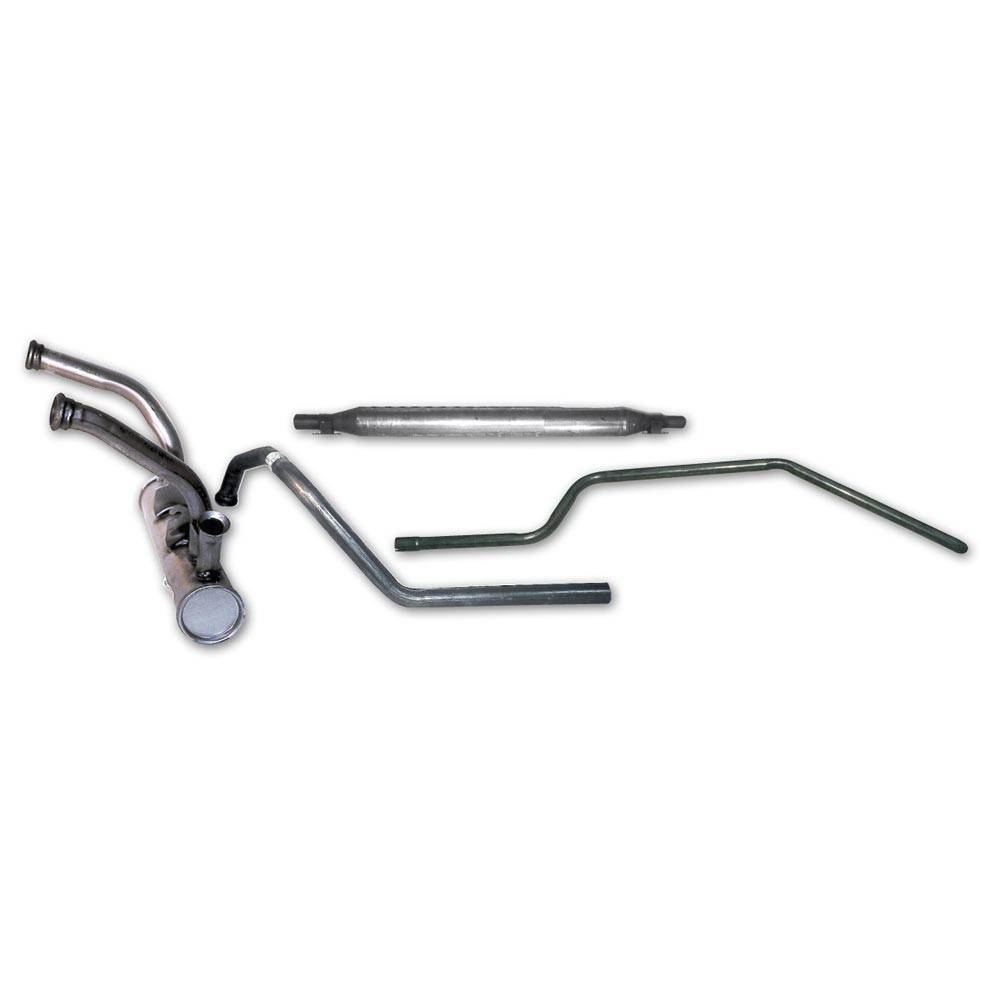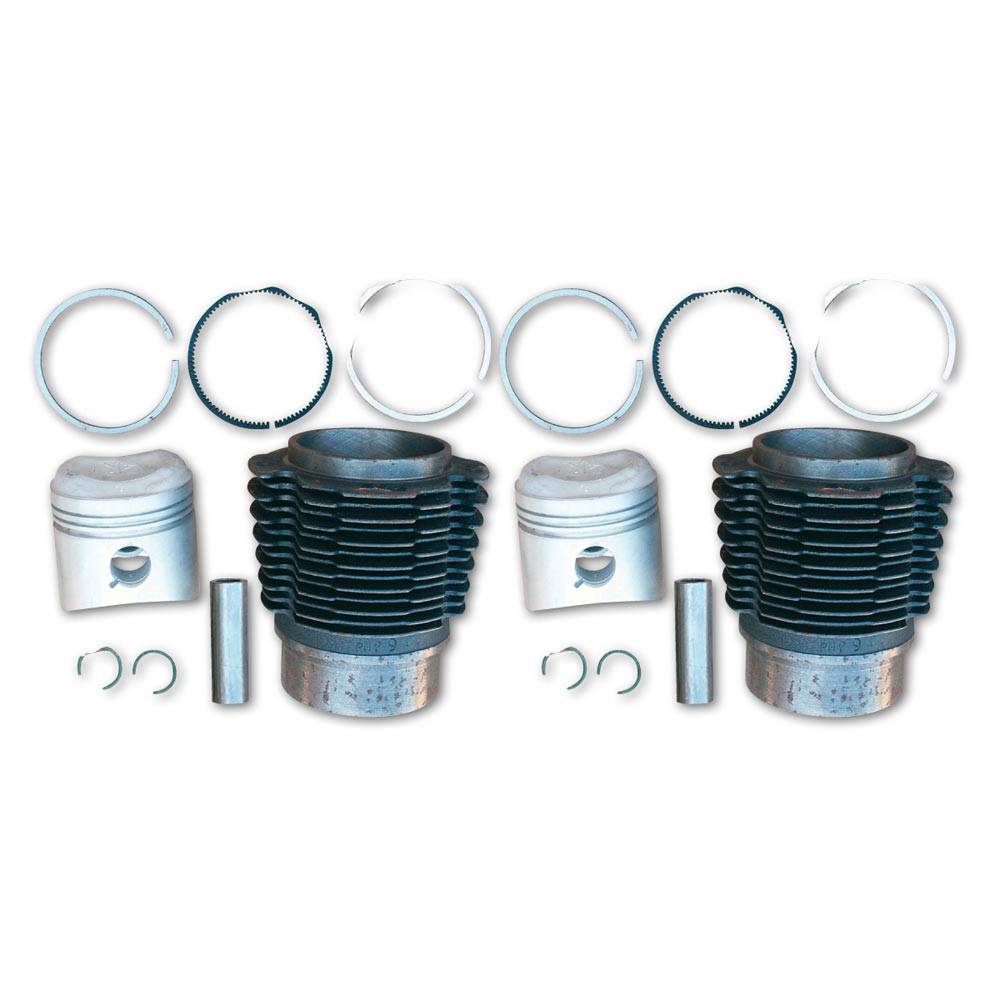Expert in 2CV engines, the Mehari Club Cassis has its own workshop for the renovation of 602cm3 engines and also distributes numerous spare parts for 2CV engines: oil breathers, single or twin carburettors, alternators, starters, electronic ignition systems, air filters, ignition coils, reservoirs... a complete range of accessories and equipment for the two-cylinder engines of your 2CV saloon car or van.
What are the main characteristics of 2CV engines?
Since its conception in the 1930s, an extremely clear set of specifications has been defined for this combustion engine: it had to be simple and robust, reliable and economical. Even though it underwent almost 10 changes during its long career between 1949 and 1990 and was fitted to more than 10 million vehicles and a large number of other Citroën models, it has always retained certain characteristic features: a front-mounted boxer-type flat-twin, 4-stroke petrol engine.
The block is made of an aluminium alloy with two cast iron cylinders and cooling fins. The two valves per cylinder are operated by pushrods and then rods on the rocker arms in the
cylinder head. There is a camshaft at the bottom of the engine driven by pinions and synchronised to the crankshaft by a gear with backlash adjustment. The fuel is fed by a
carburettor and the cooling is direct with pulsed air (and not liquid cooling as for contemporary cars) via a dedicated turbine which is directly mounted at the end of the engine shaft. The so-called twin-spark ignition is also simplified and works on the same principle as a single cylinder with simultaneous, not staggered, ignition of the two spark plugs (one per cylinder). The characteristic
exhaust system, which contributes to the distinctive sound of the 2CV, has also evolved over time. On the first models equipped with the 375 or 425cc engines, the exhaust lines were short and ended under the gearbox thanks to a so-called "two-in-one" silencer connected directly to the outlets of each cylinder. Subsequent models introduced a long tailpipe, which extended to the rear of the 2CV saloon and to the front of the rear left wheel for vans.
As the history of the 2CV engine progressed, its number of cylinders increased and it naturally became more powerful, rising from 375 cm3 to 602 cm3 and from 8 bhp DIN to 33 bhp DIN. The 652 cc versions that appeared from 1978 onwards and were equipped with an electronic ignition, were never installed in a 2CV, they were only fitted to the Visa, the LNA and to a small Romanian car developed in partnership with Citroën, the Oltcit Spécial.
What were the evolutions of the 2CV engine?
When it was presented at the 1948 Paris Motor Show, the 2CV had a 375cc engine. This was fitted to the first model, the Type A, from 1949 to 1954. A 425cc engine soon followed for the next models, the AZ and AZU. A 435cc engine was also offered on the AZ A2 2CV4 between 1968 and 1979. Finally, the 602cc engine appeared in 1961 with the 2CV AZAM and was the most popular engine of this legendary little car until it was discontinued in 1990. The 602cc version underwent 4 major evolutions throughout its history, but the weight never changed: 66 kg. It was fitted to many 2CV saloon models: the
2CV6 (type AZ KA), the Special (type AZ KB) and the famous limited series such as the Charleston, the 007, Dolly, Cocorico or France 3 (Beachcomber), also the type AZ KA. In addition to the saloon car, this engine was installed in many 2CV vans such as the AK350 and AKS400 as well as other derivative cars (Dyane 6, Ami 6, Méhari, Acadiane, etc.).
The most powerful engine in the 2CV range, the 602cc has variable maximum power ratings depending on the model, going up to 33hp DIN, maximum motor speeds of 4,750 rpm up to 5,750 rpm for an administrative or fiscal power maintained at 3 HP.
It should also be noted that almost all
2CVs and their derivatives, with the exception of the 4x4 models, were all equipped with the same gearbox offering 4 synchronised gears and a reverse gear. Even though the 4 shaft two to two coaxial arrangement was retained in all gearboxes from 1949 to 1990, the gear ratio values have however evolved according to the mass and power of the different 2CV models.
Which engine oil for 2CV?
The Citroën twin-cylinder engine is lubricated by forced oil circulation. The oil pump is located at the end of the camshaft and an external front radiator completes the cooling circuit. The use of synthetic oils is totally inadvisable for these old generation engines. We advise you to use either multigrade oils or semi-synthetic oils, such as 15W40 or 15W50 for winter and 20W50 for summer. As far as fuel is concerned, the simplest and most effective way of protecting the engine from corrosion and preserve its performance is to use unleaded 98 petrol by adding a lead substitute additive to the fuel once it has been filled up. The oil for the gearbox is a specific 80W140 viscosity oil.
How to rebuild a 2CV engine?
Even if the two-cylinder engine is very simple in design compared to today's cars, rebuilding a 2CV engine requires real expertise. For this, 2 solutions are available to you: the simplest is to buy directly on our online shop a 602 cc engine completely rebuilt by our renovation workshop in Cassis. Thanks to the historic machine tools of the brand with the chevrons, this workshop perpetuates the Citroën tradition by entirely reconditioning hundreds of twin-cylinder engines per year. It is one of the symbols of the unique know-how of our restoration teams, for which our company received the certification Living Heritage Company in 2019. These "new" engines are guaranteed for 6 months with the possibility of extending the guarantee to 24 months and all have their original number on the plate riveted directly onto the block near the starter. They are marketed as standard exchange: that is to say that a used engine must be given to the 2CV Mehari Club Cassis in exchange for a new engine. A deposit is charged at the time of ordering, which is fully refunded on reception of the old engine.
The second alternative to buying a rebuilt engine is to undertake the renovation of your two-cylinder engine yourself. This work requires a certain amount of expertise and even dedicated tools and equipment. To carry out your renovation project, you will find in this section an unequalled choice of new or renovated spare parts to restore or repair your 2CV engine.






